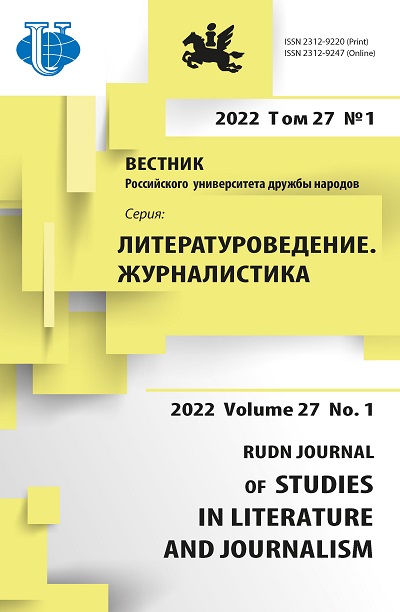Travelling with Quichotte: Reading Rushdie’s Quixotic Reinvention of Cervantes’ Don
- Authors: Chakraborty A.1
-
Affiliations:
- Chandernagore College
- Issue: Vol 27, No 1 (2022)
- Pages: 102-108
- Section: LITERARY CRITICISM
- URL: https://journals.rudn.ru/literary-criticism/article/view/30724
- DOI: https://doi.org/10.22363/2312-9220-2022-27-1-102-108
Cite item
Full Text
Abstract
Salman Rushdie’s latest novel Quichotte , inspired by Cervantes’ Don Quixote , revolves around the journey of a fictional character named Ismail Smile who adopts the name Quichotte as he embarks on a fantastic quest across America to win the heart of celebrated actor and talk-show host Salma R, since his perception of reality has been muddled by incessant immersion in television shows, just as the mind of Cervantes’ don had been addled by his preoccupation with chivalric romances. While Cervantes’ protagonist, through his various misadventures, ironically exposed the many maladies of contemporary society, Quichotte’s journey across America, accompanied by his son Sancho, whom he miraculously imagines into existence, also operates as a picaresque narrative that methodically dissects the alarming aberrations of contemporary world order. Taking Quixote’s inability to distinguish between the real and the fictional as his starting point, Rushdie’s text eclectically foregrounds the menacing fissures of a social order where a rampant disregard for facts also becomes a platform for widespread regression into atavistic atrocities. The proposed paper will focus on such issues and more in order to highlight how the famed Man of La Mancha continues to operate as a relevant figure even within the fractious contradictions of our times.
Keywords
About the authors
Abin Chakraborty
Chandernagore College
Author for correspondence.
Email: abin_chakraborty@yahoo.co.in
ORCID iD: 0000-0002-2411-7452
PhD., Assistant Professor in English
Chandernagore, Hooghly, 712136, West Bengal, IndiaReferences
- Barthes, R. (1981). ‘Theory of the Text’, Untying the Text: A Post-Structuralist Reader. Robert Young (Ed.). London: Routledge & Kegan Paul, pp. 31-47
- Baudrillard, J. (1995). Simulacra and Simulations. Sheila Faria Glaser (Trans). Michigan: Michigan UP.
- Frye, N. (2000). Anatomy of Criticism. Princeton: Princeton University Press.
- Frye, N. (1990). The Secular Scripture - A Study of the Structure of Romance. Harvard: Harvard UP.
- Foucault, M. (2002). The Order of Things: An Archaeology of Human Sciences. New York: Routledge.
- Genette, G. (1997). Palimpsests: Literature in the Second Degree. Channa Newman and Claude Doubinsky (Trans). Lincoln: University of Nebraska Press.
- Gilbert, S.M., & Gubar, S. (2000). The Madwoman in the Attic: The Woman Writer and the Nineteenth-Century Literary Imagination. 2nd ed. New Haven: Yale University Press.
- Rushdie, S. (2012). Haroun and the Sea of Stories. New Delhi: Penguin.
- Rushdie, S. (2019). Quichotte. New Delhi: Penguin.
- Trilling, L. (2008). The Liberal Imagination. Introduction by Louis Menand. New York: New York Review Books, 2008.
















